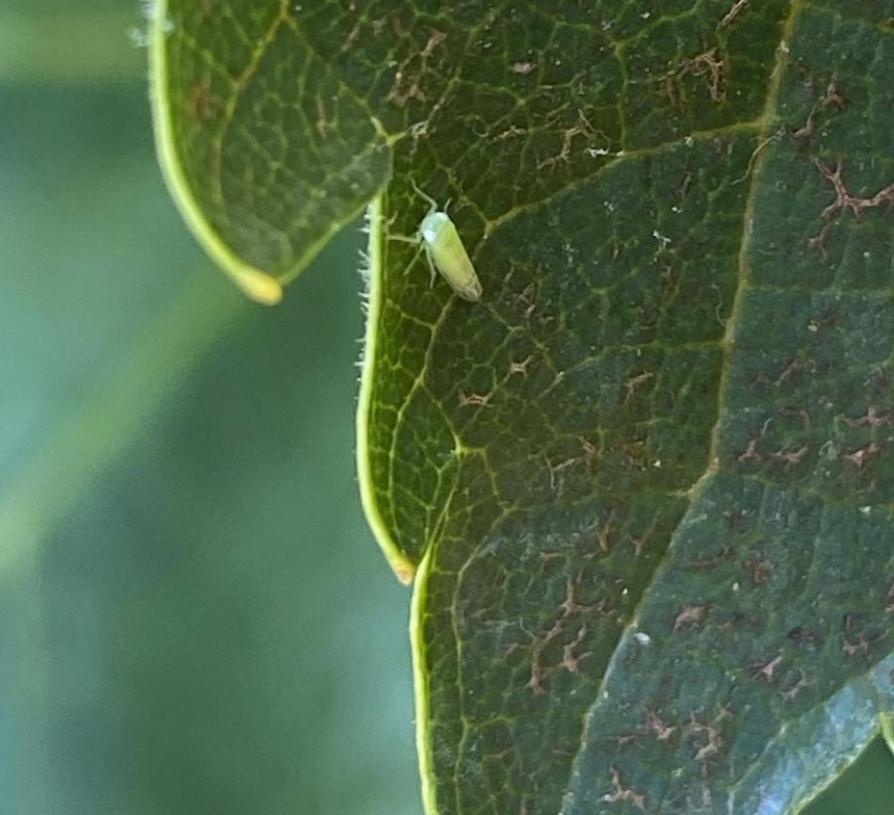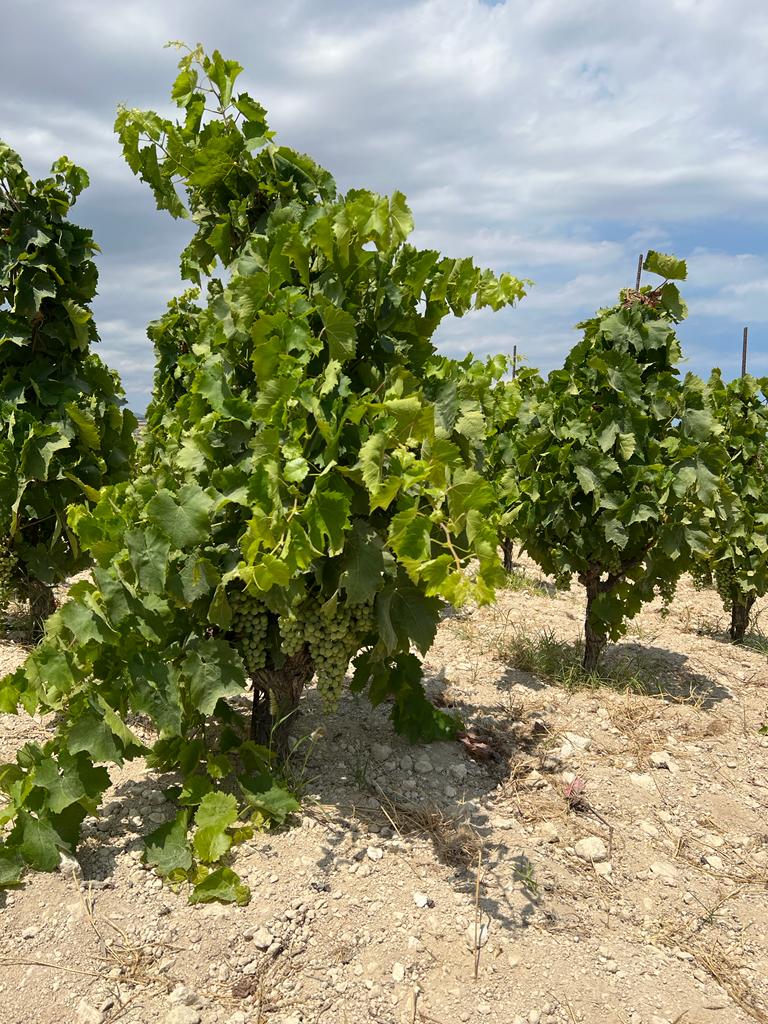My dear friend,
You should know that, from an agronomic point of view, the 2022 harvest had started with excellent conditions. Really great. Last autumn had brought abundant rains that had refreshed the lands which were burnt due to the summer of 2021. Last winter was mild, precisely those rains gave an outstanding boost to green manures that have grown luxuriant and dense, bringing an exceptional quantity of organic matter to soils.
The “Moscato” vines were the first to sprout, in the first week of March. April was a month with a magnificent light that gave a considerable boost to the vines, that’s when we started the treatments with powdered mine sulfur, during the season just four times in the white grape vineyards and three times in the plots of red grapes. The month of May was quite hot and dry, with no problems during the flowering period. Temperatures were high at the end of June, a situation that, even so, did not compromise the health of the bunches or the setting of the grapes. So far, so good…

The beginning of August coincided with some light rains and an increase in humidity, which created the conditions for the uncontrolled development and spread of an insect that strongly marked the 2022 harvest throughout our area. The African leafhopper (Jacobiasca lybica) is a Mediterranean species, very harmful to cotton crops in Egypt and Sudan, of solanaceae in Israel and also known for its attacks on vines in North Africa, Spain, Cyprus, Sardinia and Sicily. The damage caused by this tiny insect is due to the sucking stings on the main and secondary veins of the growing leaves. On the vine, these stings obstruct the flow of lymph and cause necrosis in the growing leaves, with yellowing of the tissues in the white vines and redness in the red vines, up to causing the drying and fall of the leaves.
The colour alteration and desiccation appear only after a long time (2-3 weeks) from the beginning of the attacks, in the most serious cases there is the total drying of the leaf and, subsequently, the late emission of new shoots may occur.
This insect has had a strong development in the summer months throughout the area of “Val di Noto”, in our vineyards it has delayed its diffusion compared to neighboring plots, but it has also arrived here, developing strangely in the most exposed vineyards and not in those at the bottom of the valley that they are usually the most vulnerable because they are more humid. To contain its development, we treated our vines three times with neem oil. It is a natural insecticide obtained from the cold pressing of Azadirachta seeds, a repellent that repels insects and prevents them from eating the leaves of the plant, also able to inhibit the growth of parasites.
The effects of the leafhopper, even in less serious cases, are inevitable: the leaves of the affected vines limit their photosynthesis function, thus delaying the ripening of the grapes and leading to much lower sugar values than the average of past years. The positive aspect was in the yields of the grapes and above all in their health, always excellent.

The first vineyard we harvested was “Fondo alla Palma”, harvested on August the 13th, this plot has not had any attack by the leafhopper and has matured regularly. The grape harvest resumed from August the 23rd respectively with the “Chardonnay” and the “Moscato”, first for “Muscatedda” and immediately after for “Passito”, which remained on the racks in the sun until September the 7th. After the fermentations we found wines of good drink, salty, with fragrant, delicate aromas and without any extractive excess.
“Nero d’Avola” harvest began on September 20 with “Parrino” vineyard, on September 28 we harvested the grapes for “Rosa Nera” and “Coniglio”, on 29 and 30 “Lenza Lunga”. In October we collected the last plots: “Archimede”, “Don Paolo” and “Conca”. The grapes were all very healthy, turgid, without any presence of withered berries, the seeds well lignified.
With the exception of “Archimede” vineyard (from which we collected the equivalent of just two thousand bottles from one and a half hectares of vineyard), almost all the vineyards are aligned in terms of production with the average of past harvests. The macerations lasted on average about twenty days, the fermentations were slower but constant and regular. The fermenting musts had excellent aromas without any reduction problem.
This particular harvest pushed me to produce more rosé. The grapes lent themselves to this type of wine: little color, little potential alcohol content, nice fruit and freshness, so I decided to dedicate a part of the vineyard of “Coniglio” (from which very fruity “Nero d’Avola” are obtained, with imperceptible tannins) right at “Rosa Nera”. The rosé must of the 2022 harvest fermented very slowly in barriques of wild cherry, ash, mulberry, oak and even in two terracotta amphorae. It will stand in these containers until December, when we will combine the mass of the wine in a single steel tank until bottling.
Regarding red wines, the harvest brought us different nuances. Specifically: “Archimede” vineyard confirmed the density and thickness of which the older vines are capable. “Parrino” vineyard stands out as always from the others, the wine bets everything on elegance, tension and fruit, full. “Conca” gave a very savory and mineral wine with an important freshness. “Lenza Lunga”, “Coniglio”, “Don Paolo” and “Don Pasquale”, different from each other but with a common imprint, they have given thinner wines, with less structure and a nice crunchy fruit. No “Nero d’Avola”of the harvest 2022 of our vineyards exceeds 12.5% alcohol but each of them has maintained the typical stylistics of the vineyard: the freshness and the clear fruit are the masters and in no wine produced there are notes of cooked or dried grapes.
The harvest had started with great prospects since the beginning of the season, the obstacle of the leafhopper slowed down ripening by slightly lengthening the harvest period but without causing problems for the grapes. I am confident about the evolution of the wines of this harvest, although more slender and with less body I am sure that they will give, in a more gentle way, the typical mineral nuances of the calcareous soils of Contrada Buonivini.
Thank you,
Pierpaolo Messina
